To Configure kickstart to automate RHEL/CentOS 7 installation
In this article we will explain about the automated installation of RedHat based distributions by configuring the kickstart.
To install kickstart
The default configuration file for kickstart “ anaconda-ks.cfg” is available in the home directory of the root user. Supply the file via ftp or http for accessing the file while installing the operating system.
Install the following package for creating a new kickstart configuration file.
Go to Applications &rarr System Tools &rarr Kickstart for graphical mode or else run the following command to open.
Choose “ Basic Configuration” and choose your language, keyboard layout, timezone, root password. Select reboot system after installation.
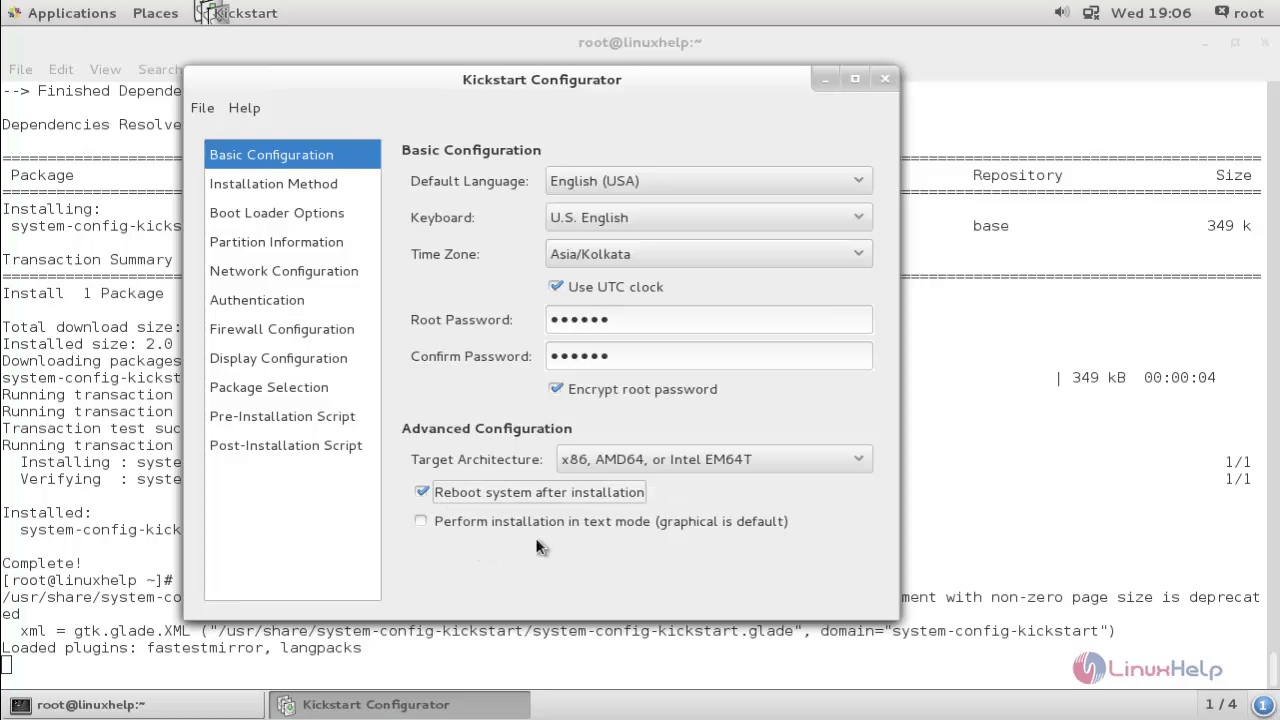
Select the Installation Method and Installation source.
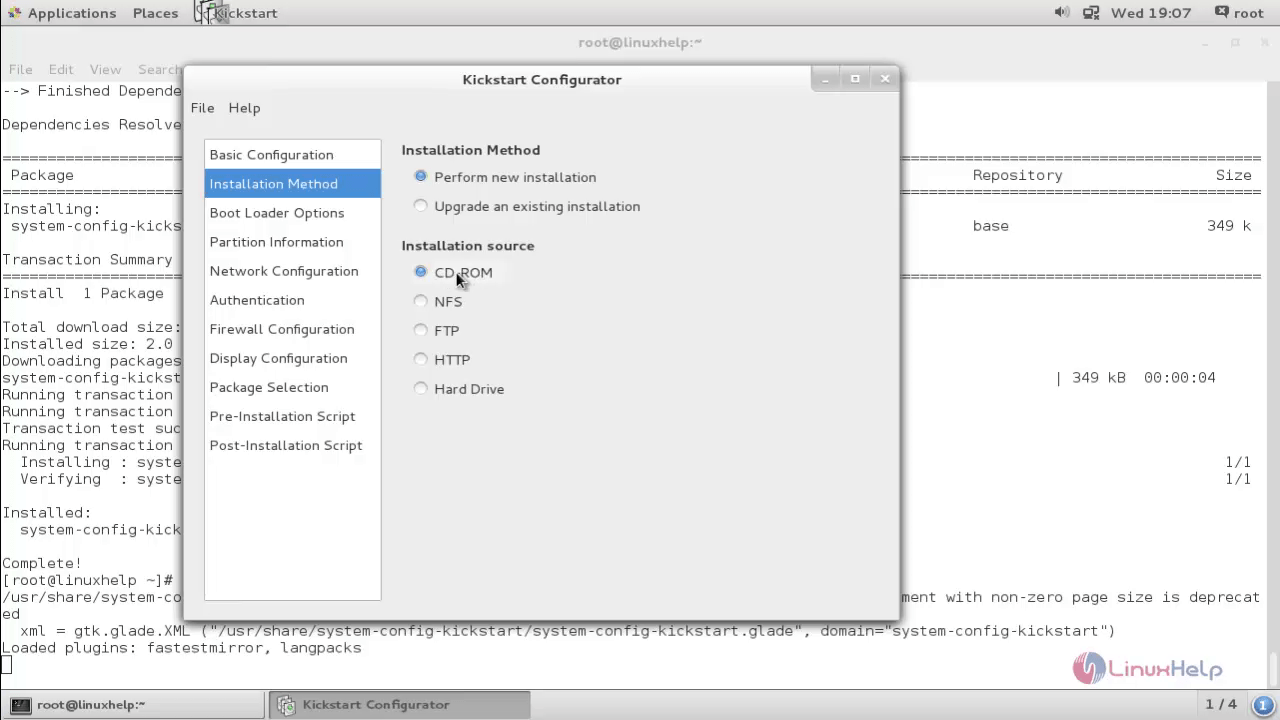
Select “ Boot Loader Options” and choose the required Installation Type, grub password and Install option.
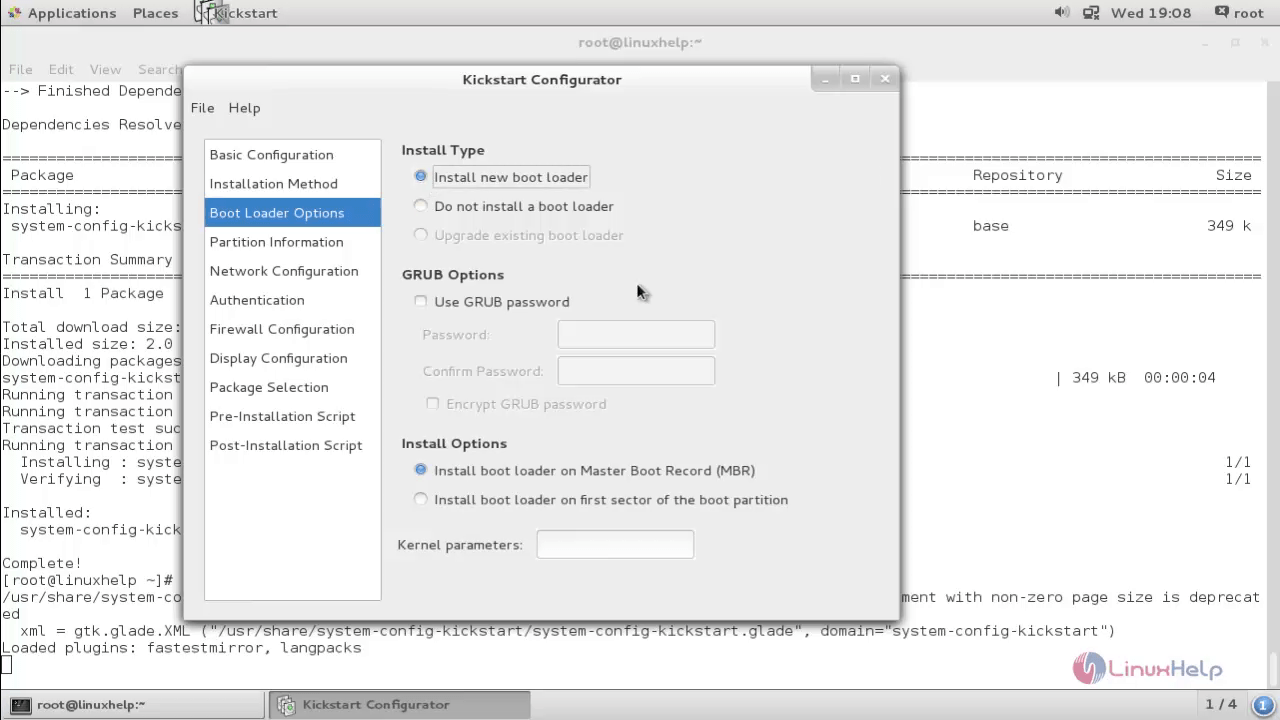
Now choose “ Partition Information” and create the partitions as follows.
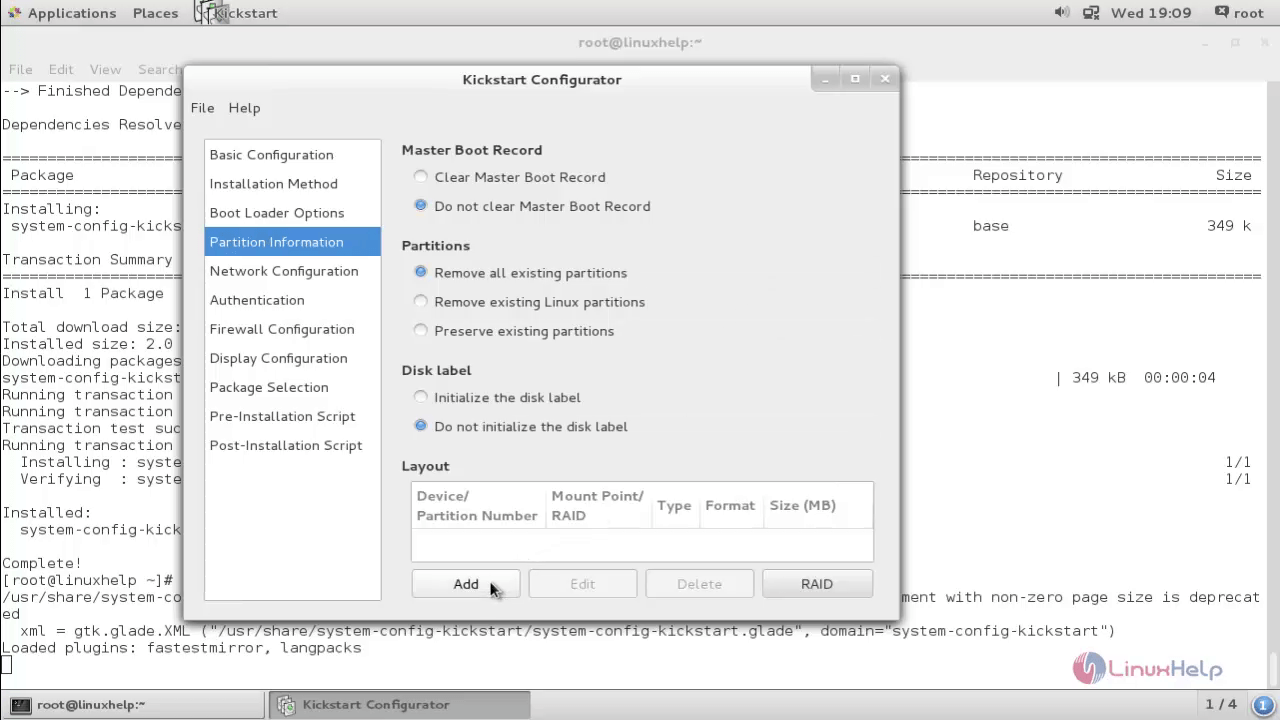
Enter the following details for /boot partitioning.
| Mount Point | /boot |
| File System Type | xfs |
| Size | 500 MB |
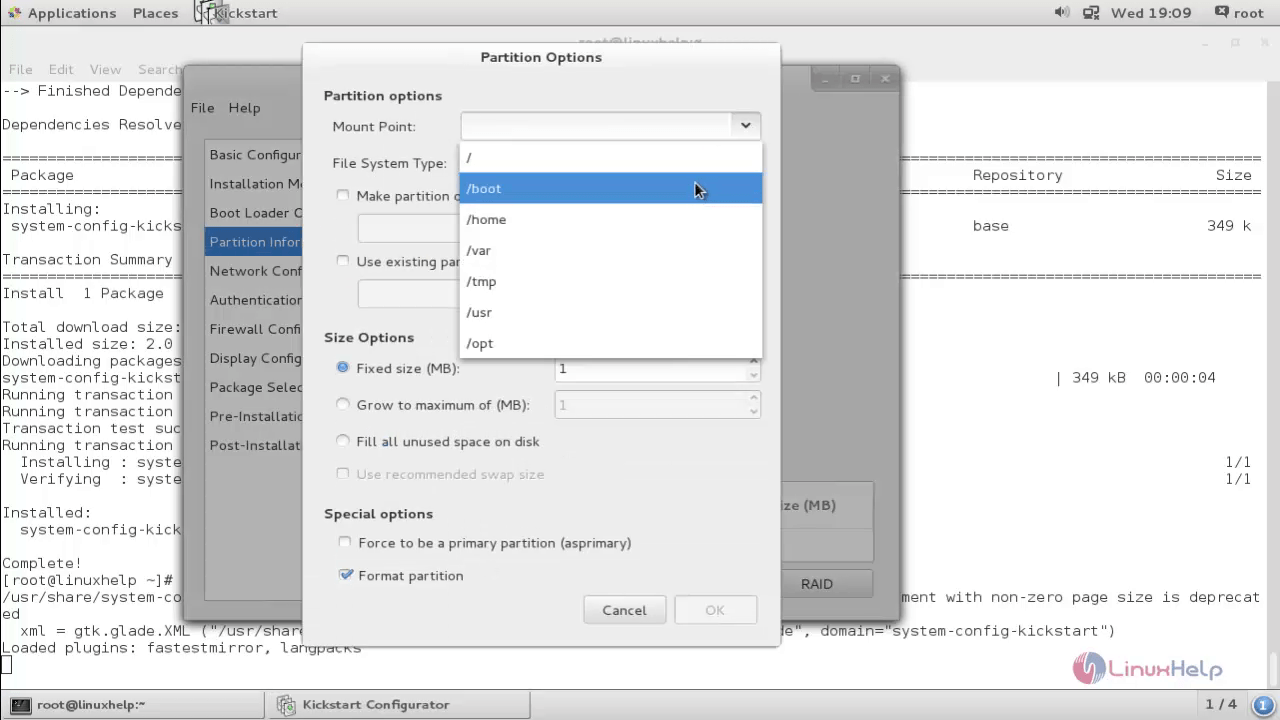
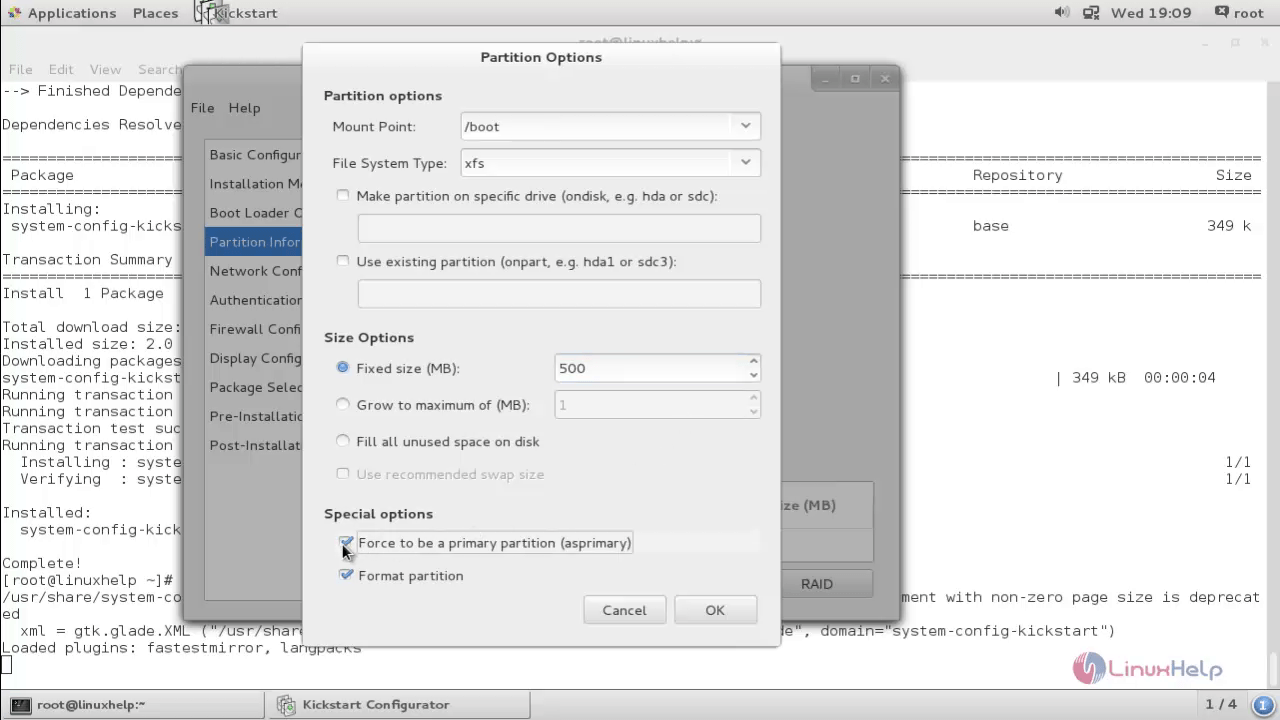
After entering the details click OK.
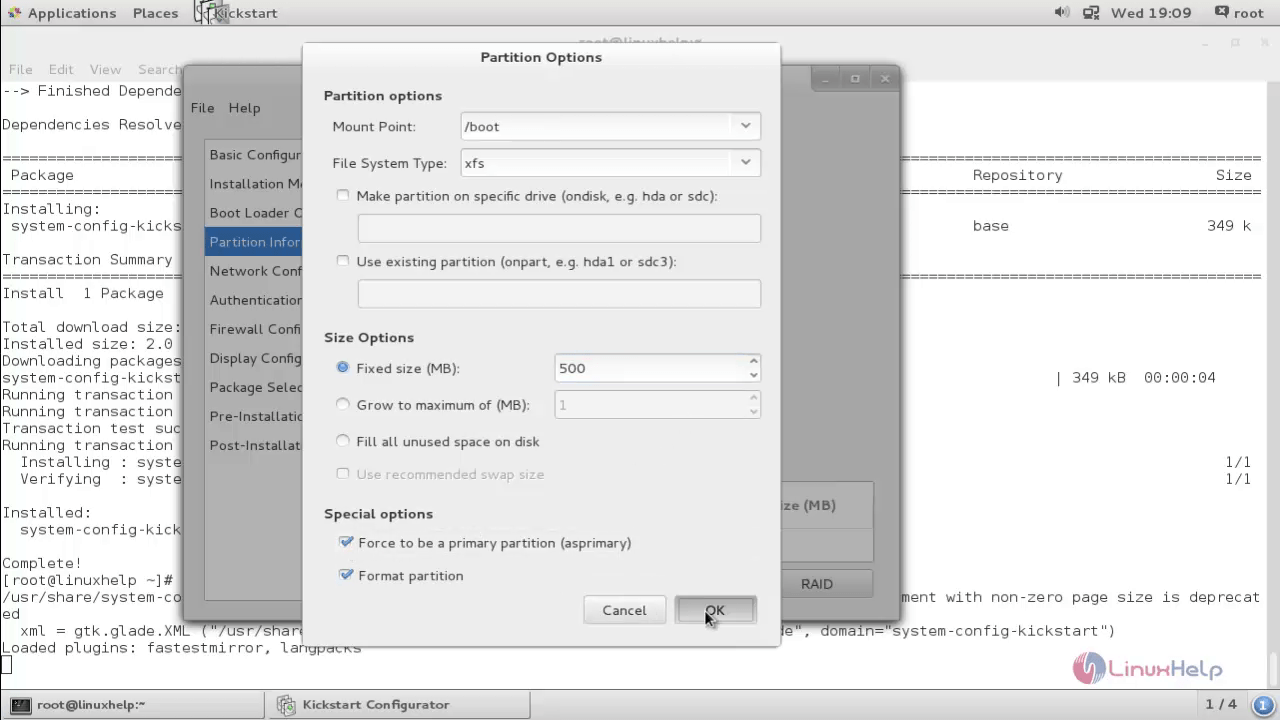

Now click Add
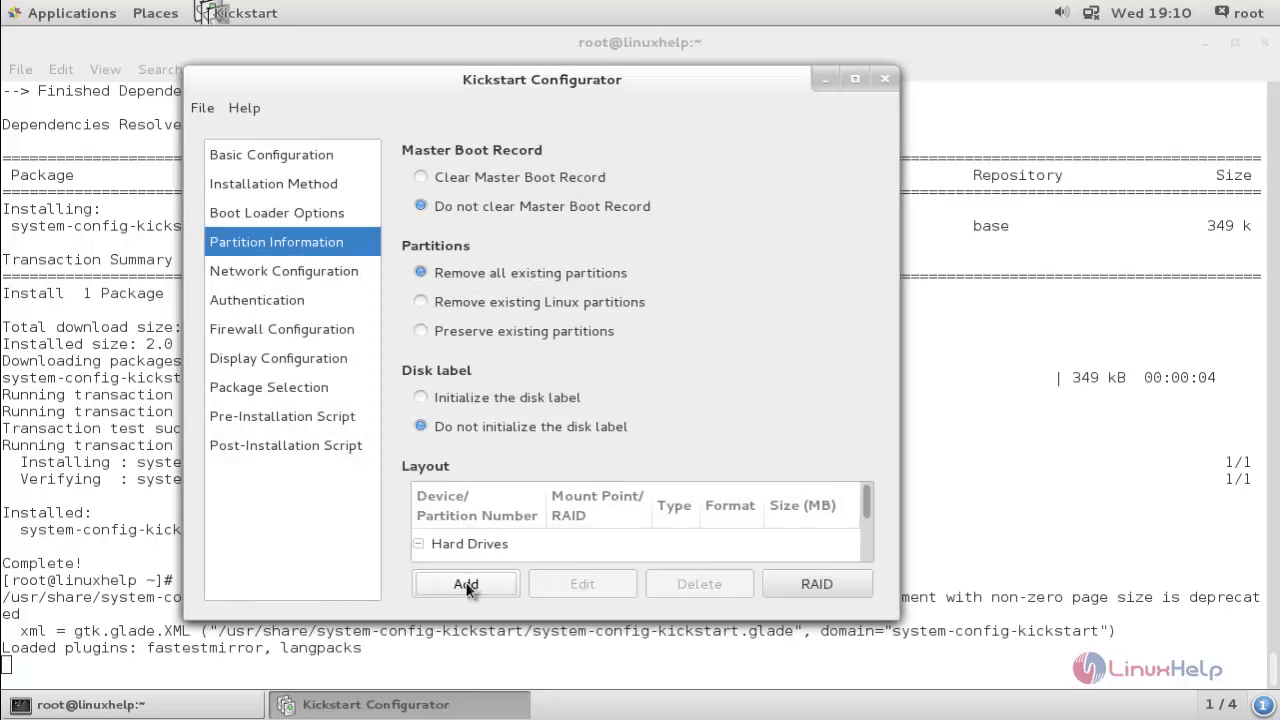
Enter the following details for / partitioning.
| Mount Point | / |
| File System Type | xfs |
| Size | 20 GB |
Kickstart
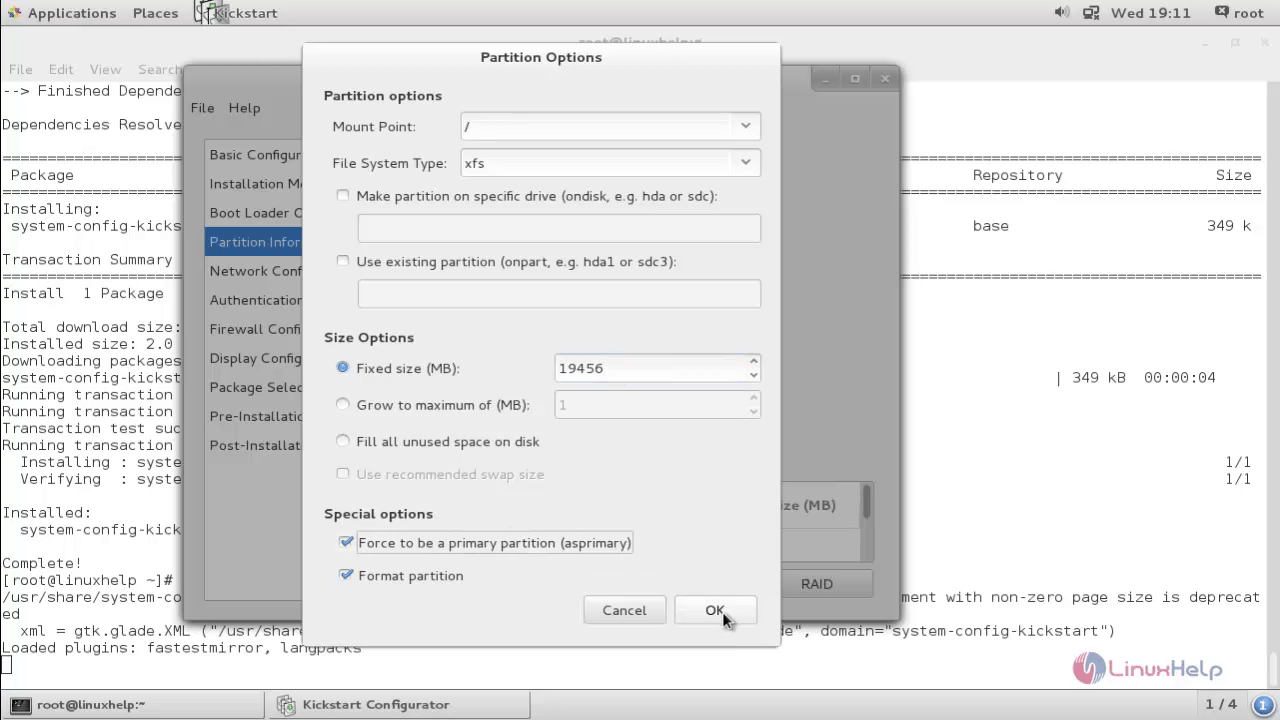
Select “ Network Configuration” and add the Network Device as follows. Here, you can choose either the DHCP or static IP.
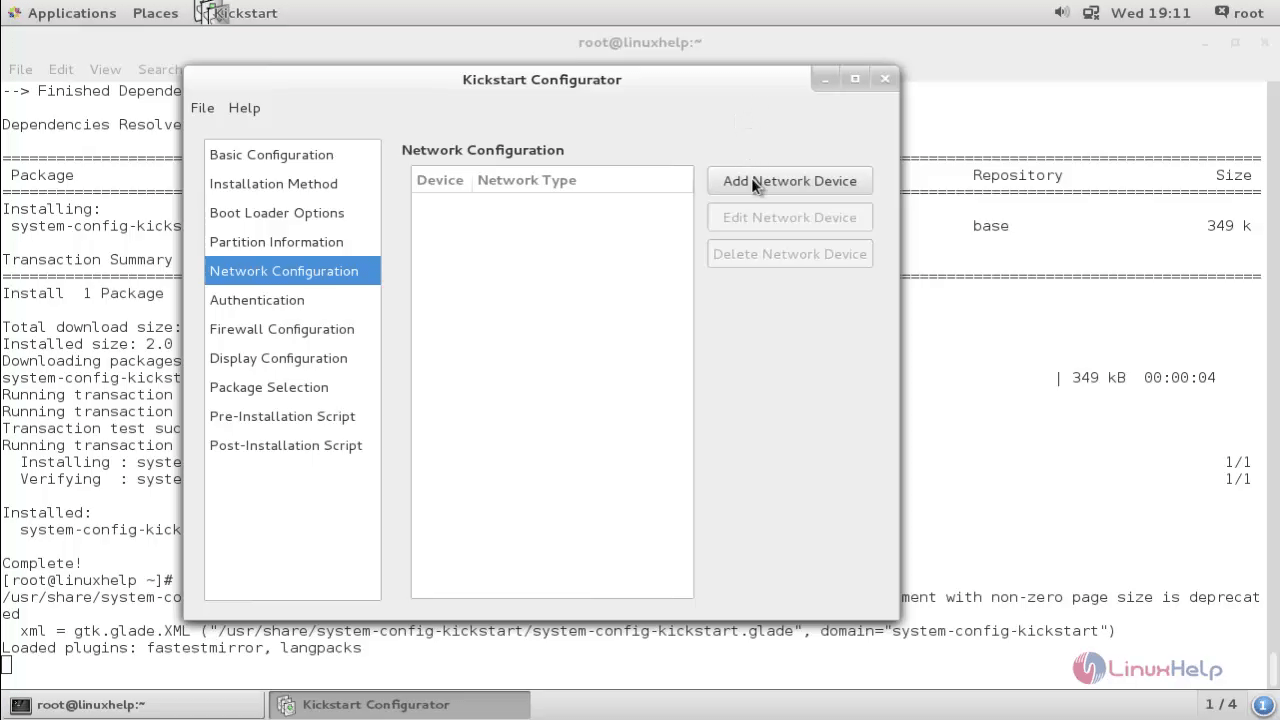
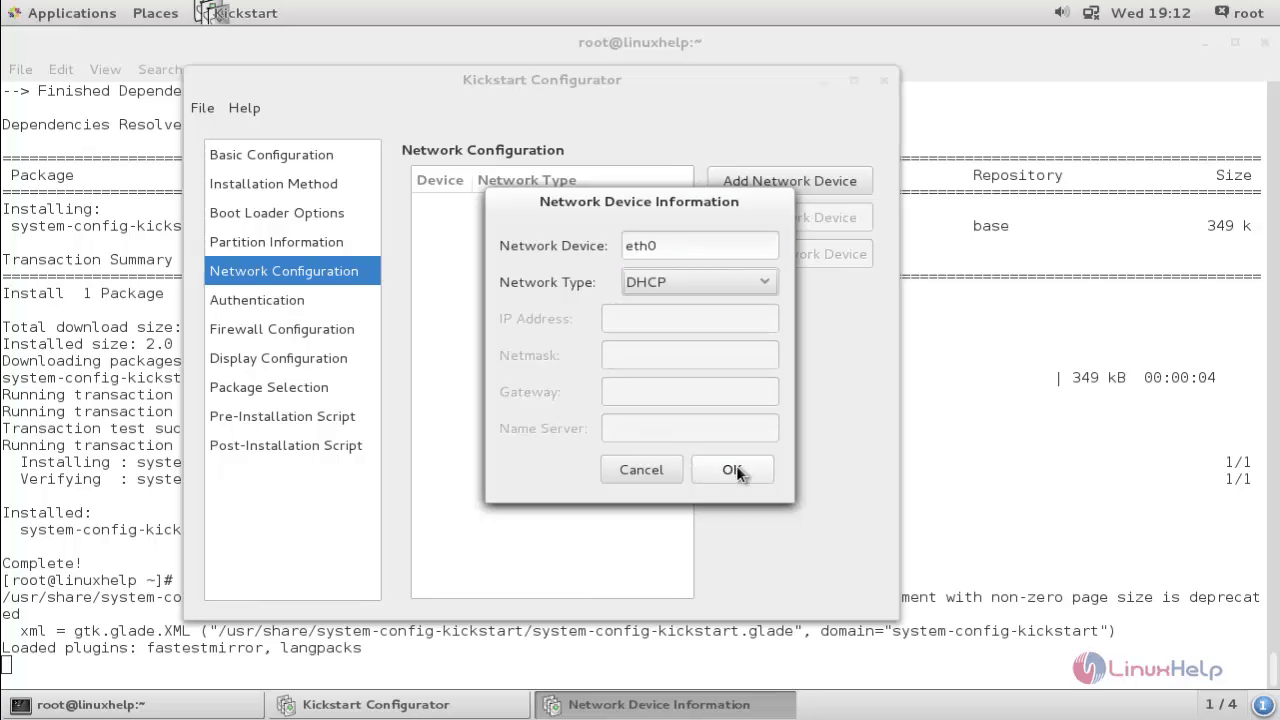
And finally Save the file.
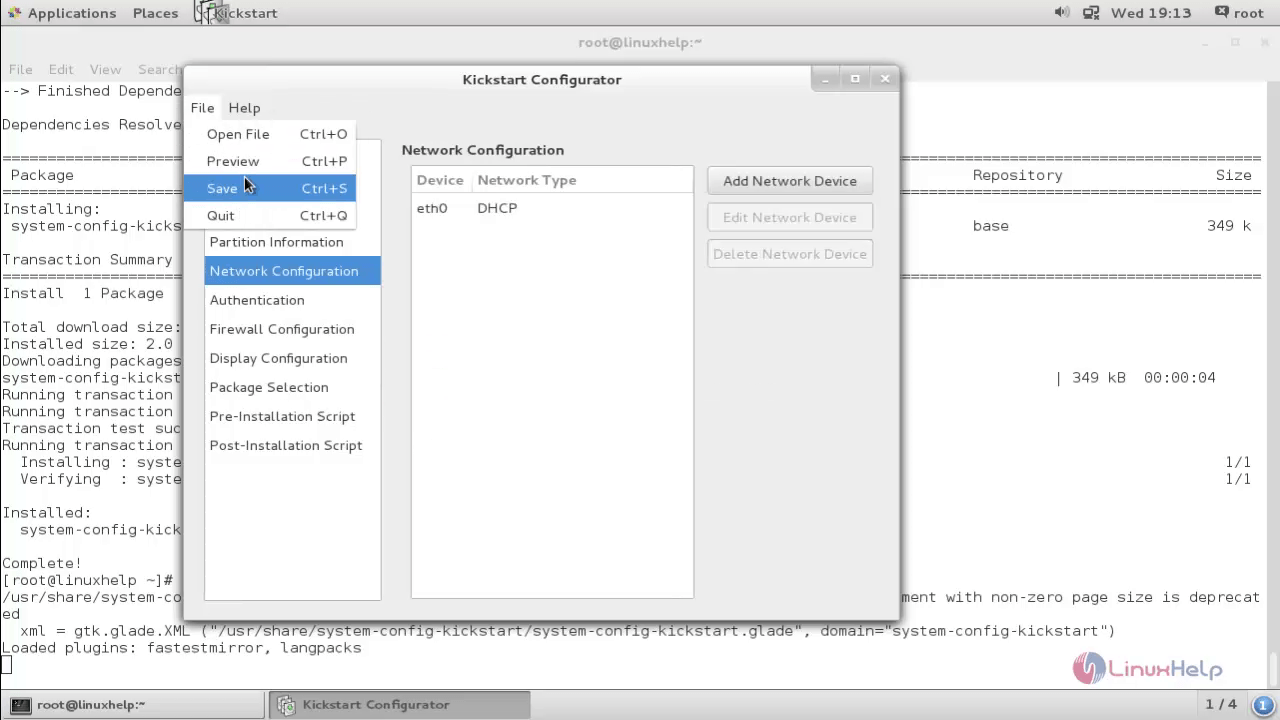
List the file in your home directory to view the new file called “ ks.cfg” for kickstart configuration.
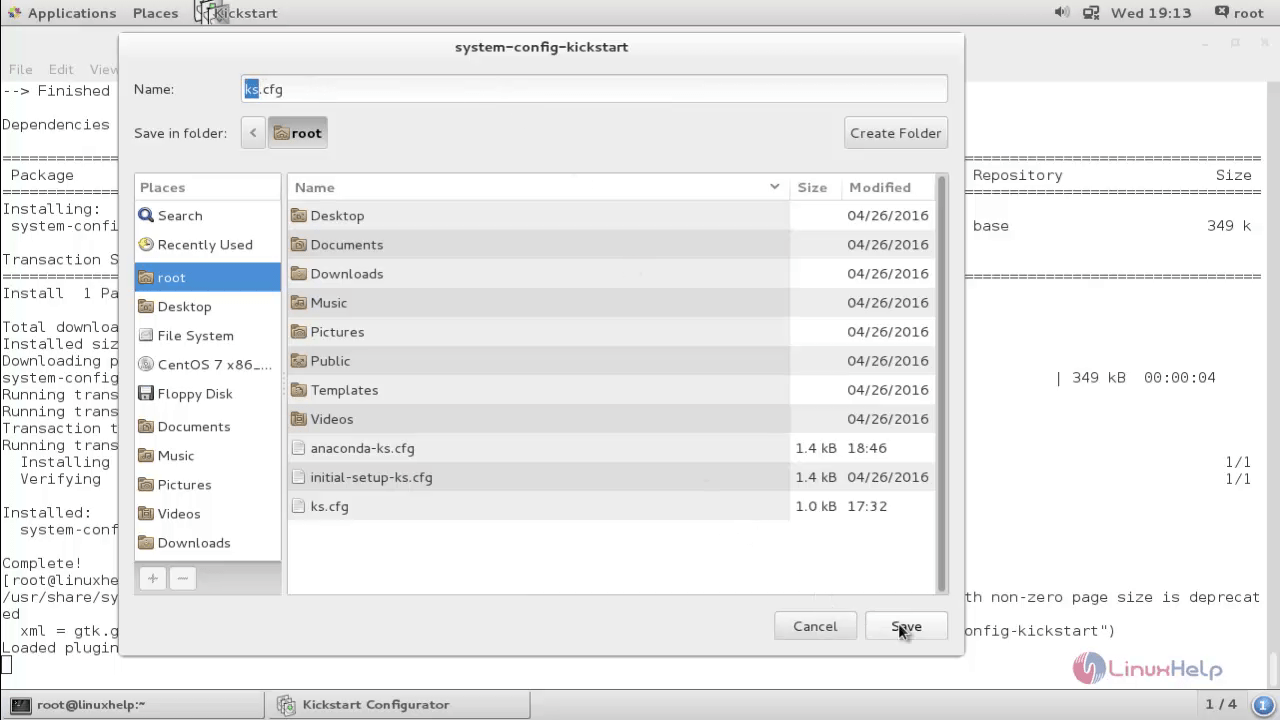
Open the “ anaconda-ks.cfg” file and copy the following lines to the “ ks.cfg” file during the installation process.
To configure ftp server
Now install the FTP package.
Copy the ks.cfg file from /root/ks.cfg to the ftp path /var/ftp/pub/
Add the firewall for FTP
Start and enable the FTP service.
Bootup the client machine with Centos/RHEL 7 installation ISO image.
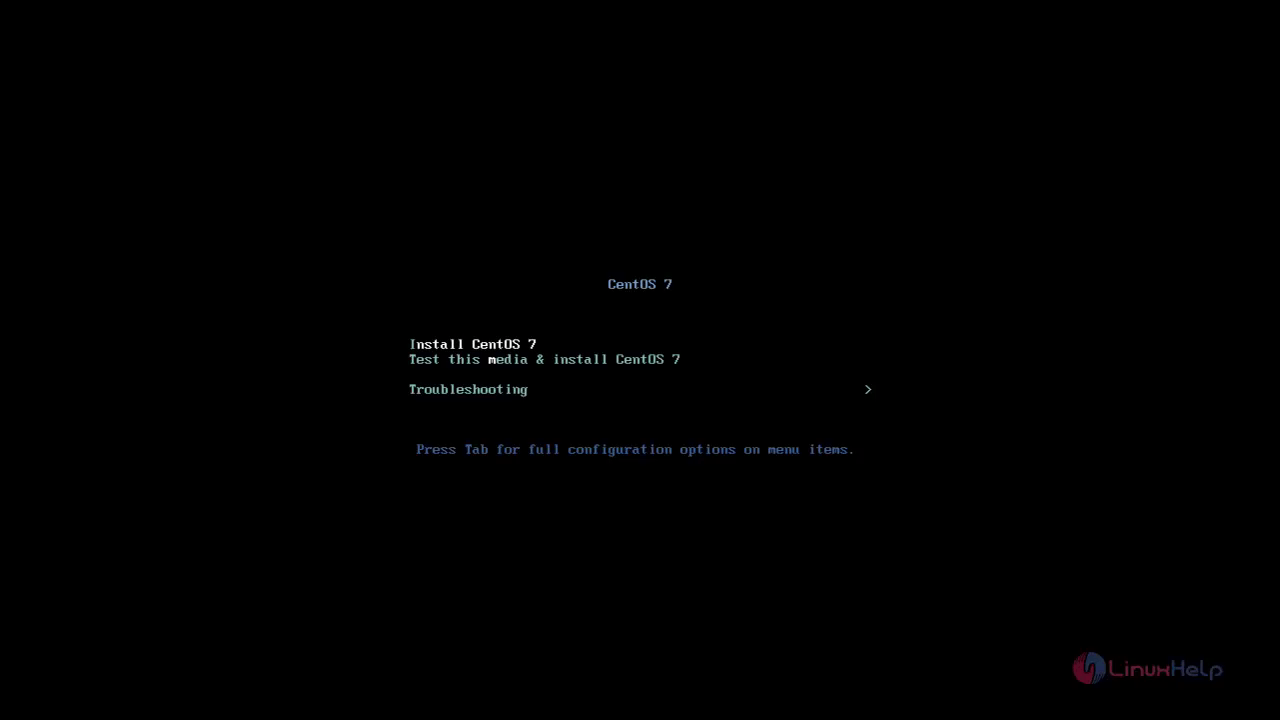
Press the “ Tab” button to inject the kickstart configuration file. Type the command ks=ftp://192.168.5.88/pub/ks.cfg as mentioned in the below image and press “ Enter” to continue with the installation.
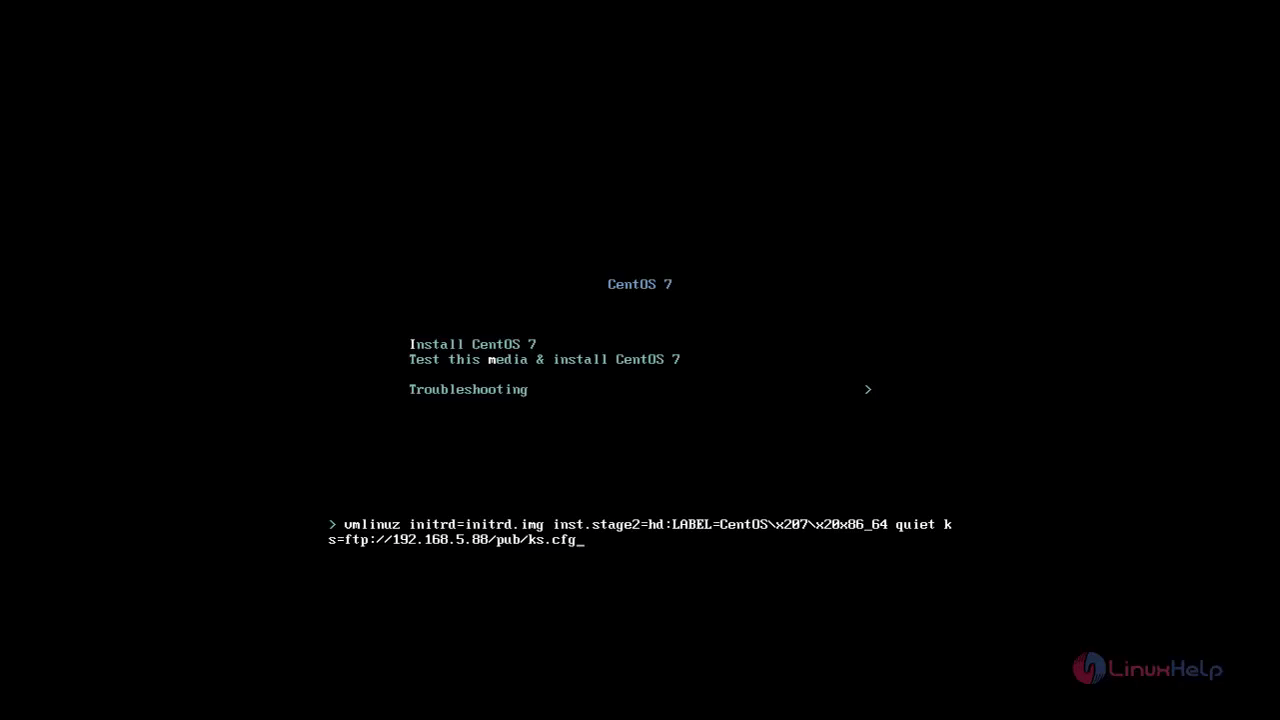
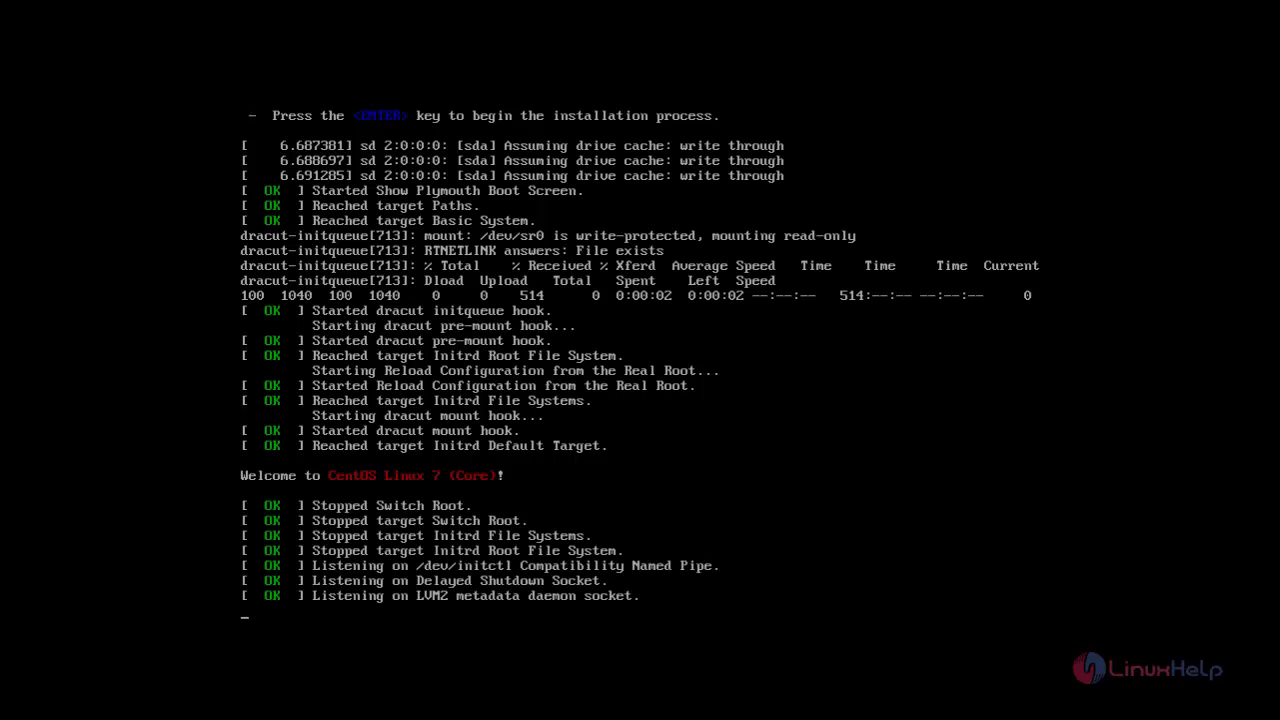
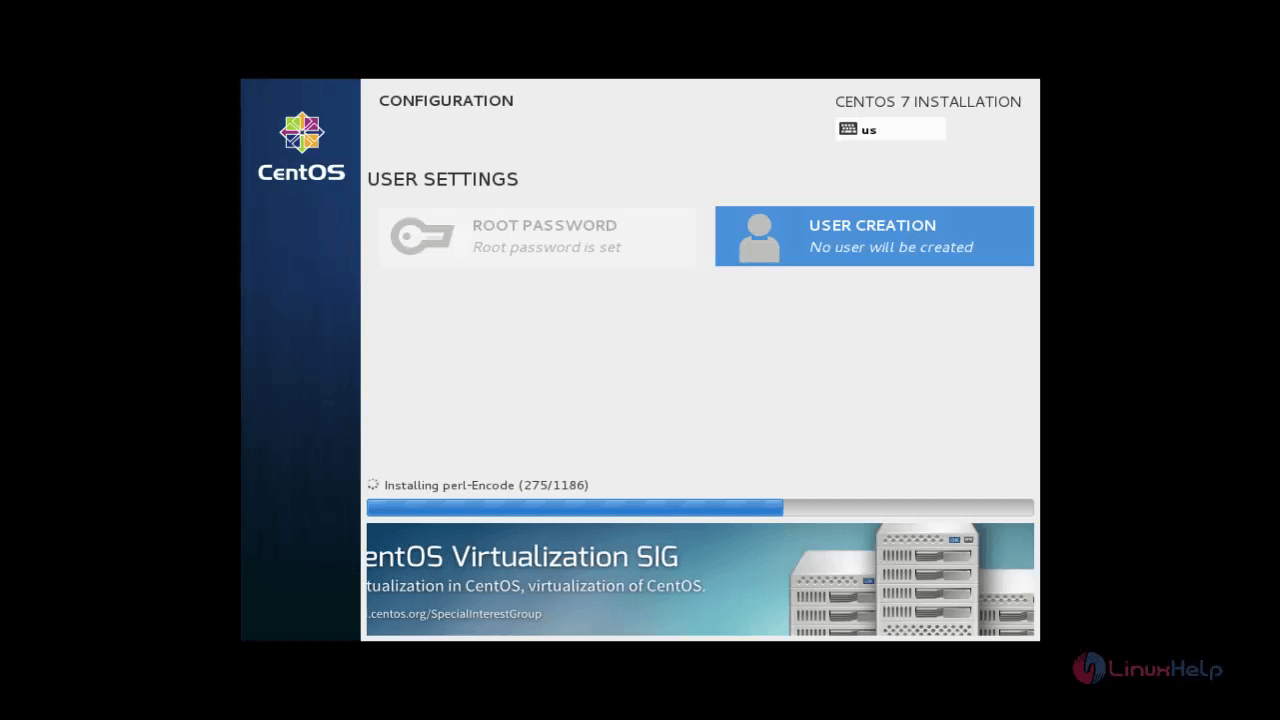
After installation process completes, turn on the machine and choose the Language.
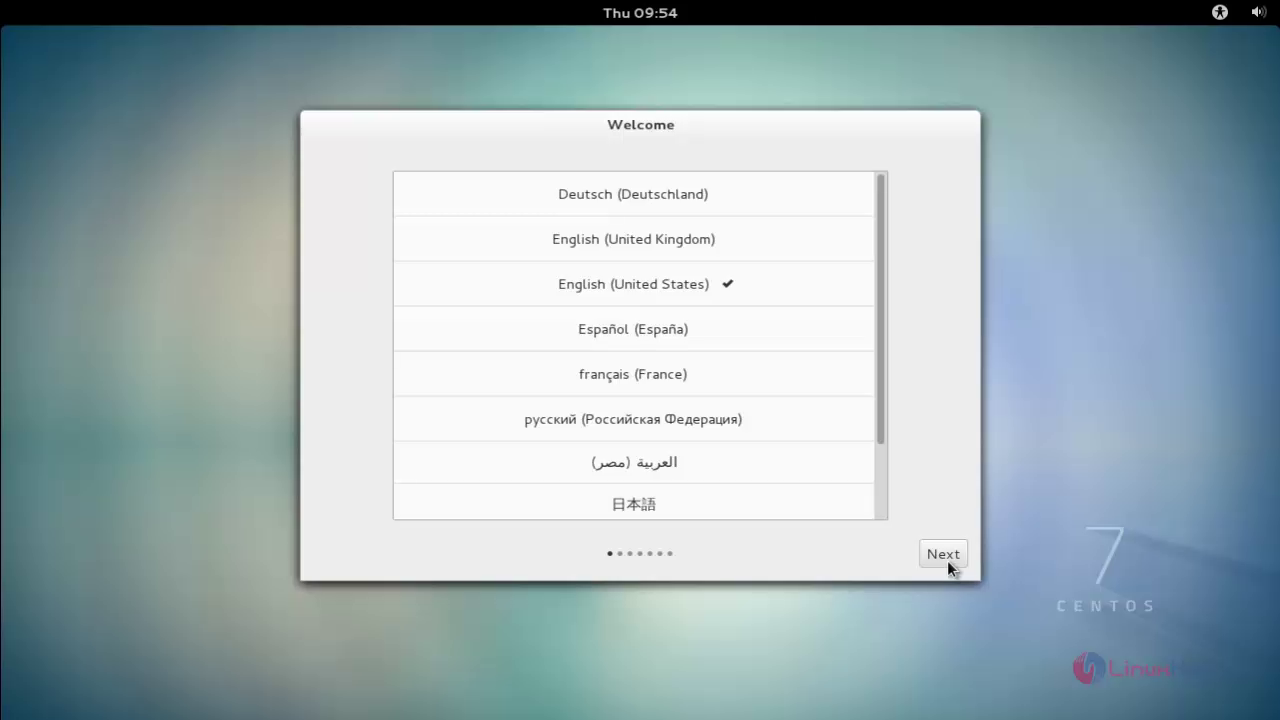
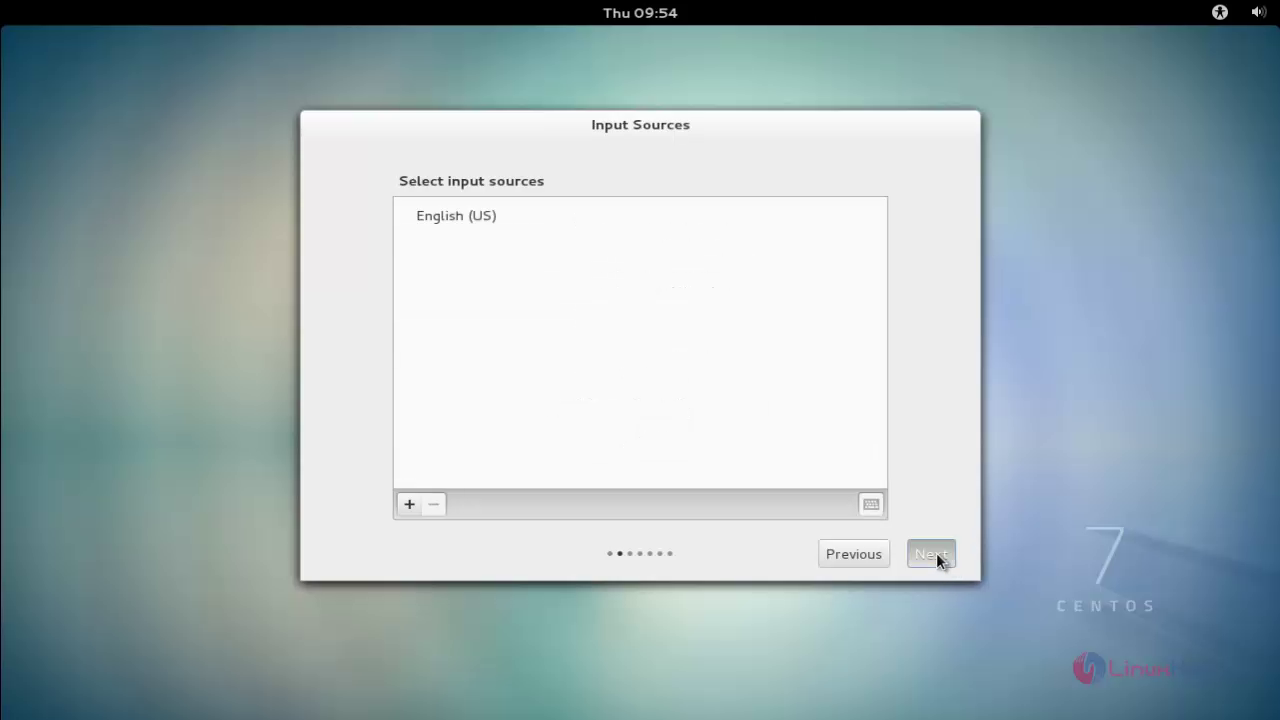
Enter the login credentials and click next.
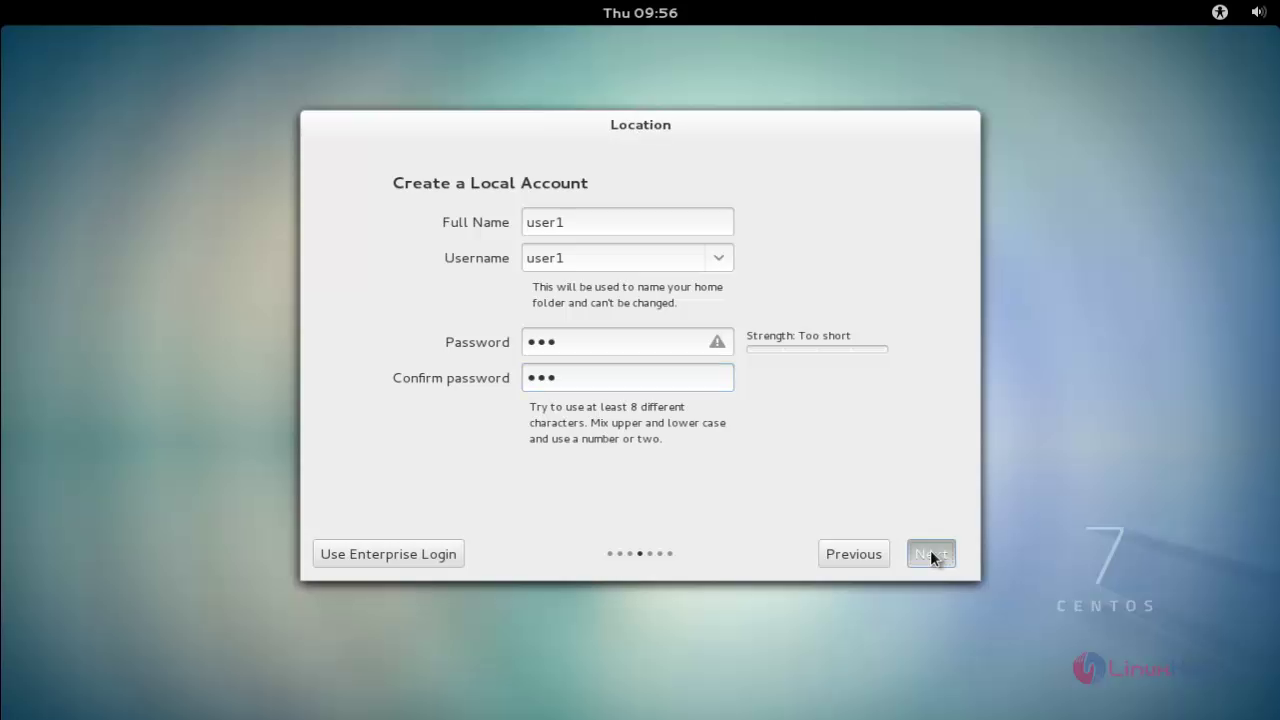
Choose your location and click next
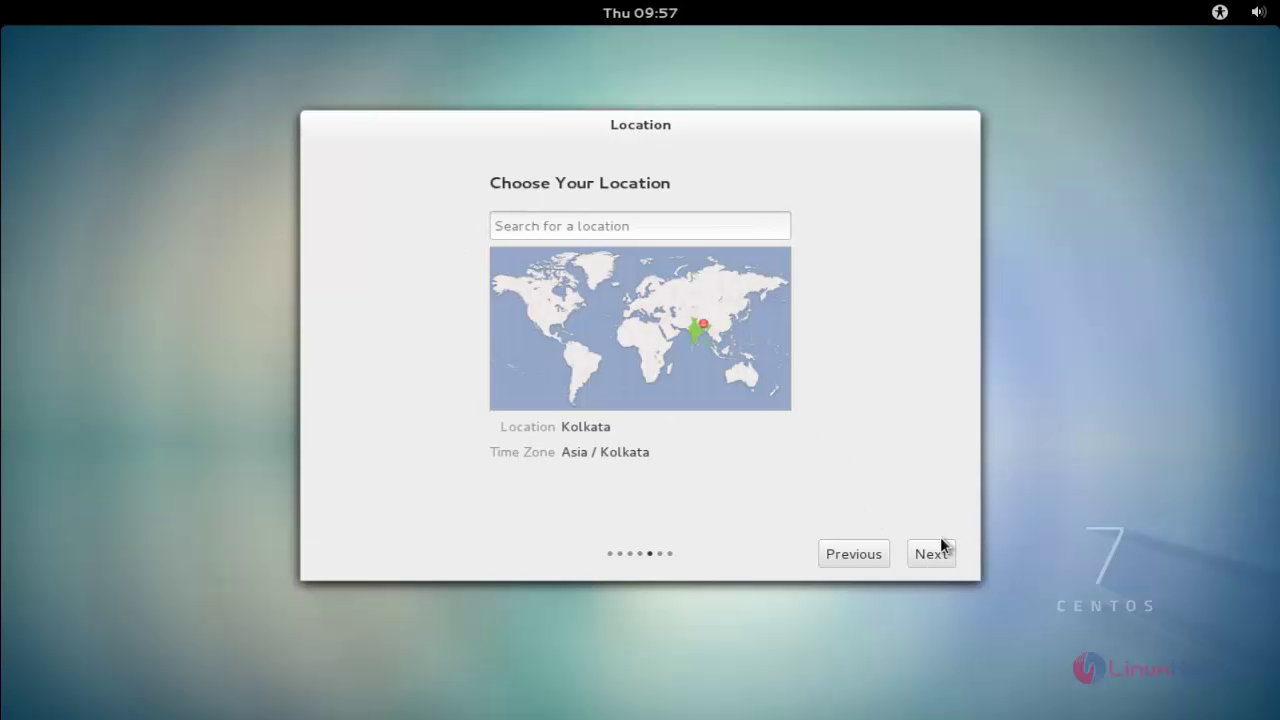
Click next to proceed further.
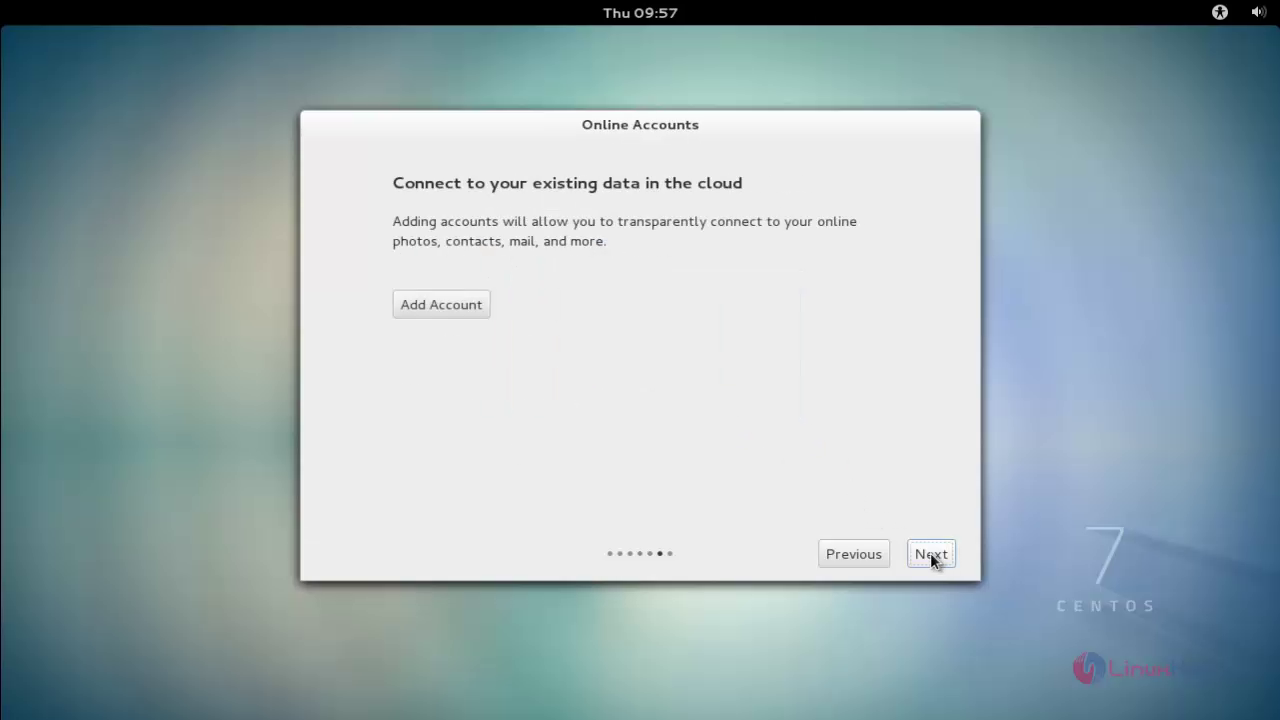
Click Start using CentOS Linux
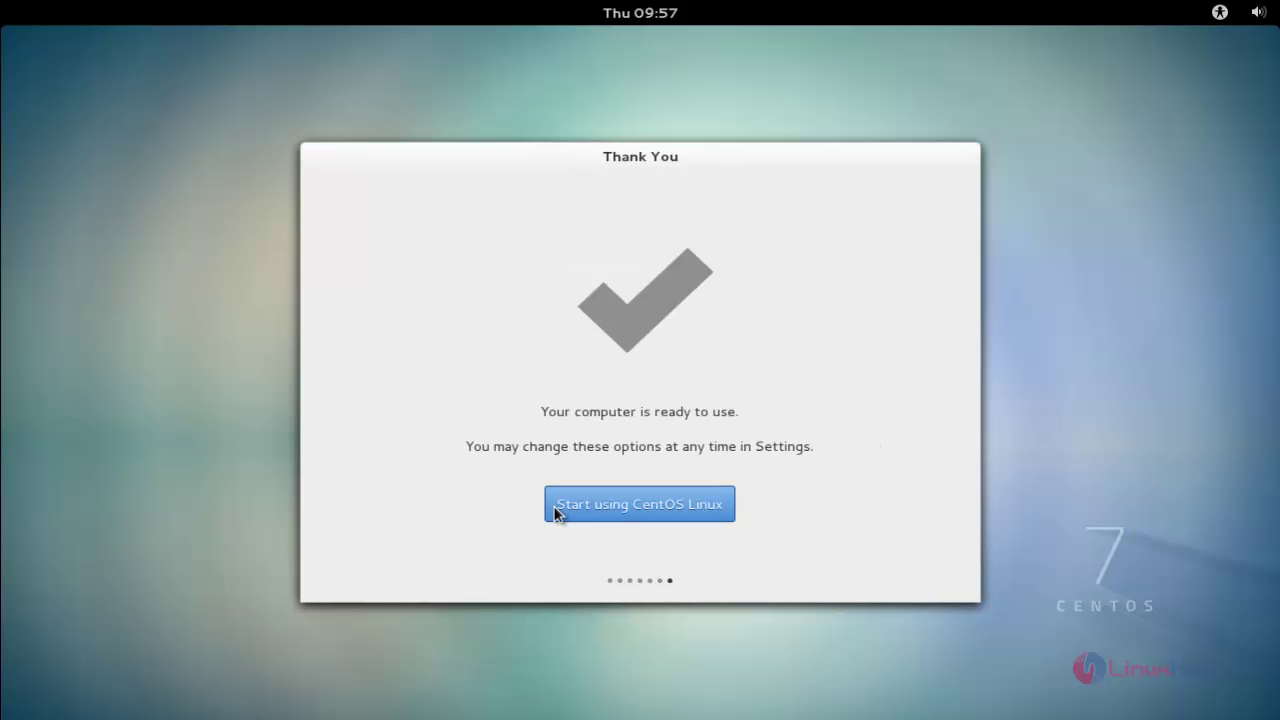
Thus the CentOS 7 installed successfully and the home screen appears.
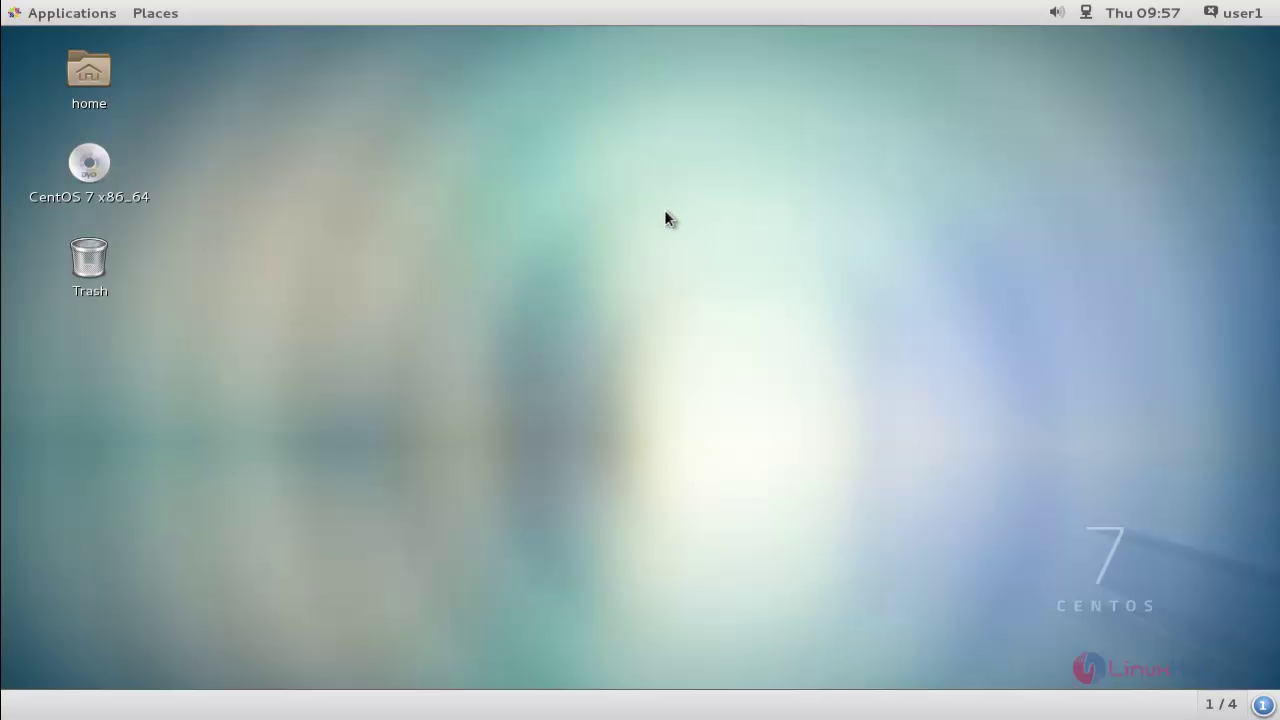
Frequently asked questions ( 5 )
Q
can I install and make changes over command line for Configuring kick start to automate RHEL/CentOS 7 installation
A
yes, you can but that’s a tedious process so Graphical mode is highly recommend for Desktop
Q
shall I make automatic partiotioning?
A
Yes. You can choose the options between manual and automatic partitioning
Q
how to start the installation ?
A
You can start it simply by rebooting the system.
Q
How to start the Graphical configuration ?
A
Go to Applications &rarr System Tools &rarr Kickstart for graphical mode or else run the following command to open.
system-config-kickstart
system-config-kickstart
Q
How to install the FTP package.?
A
Install the FTP package using the following command
yum install vsftpd -y
yum install vsftpd -y




0 Comments
Post a Comment